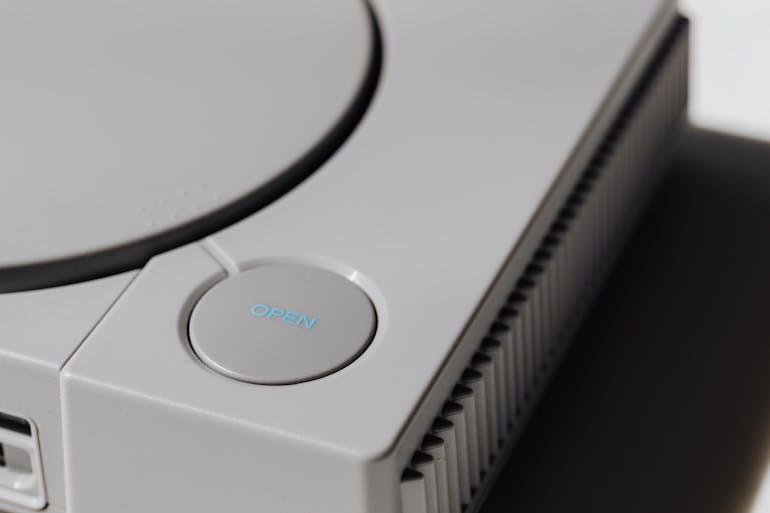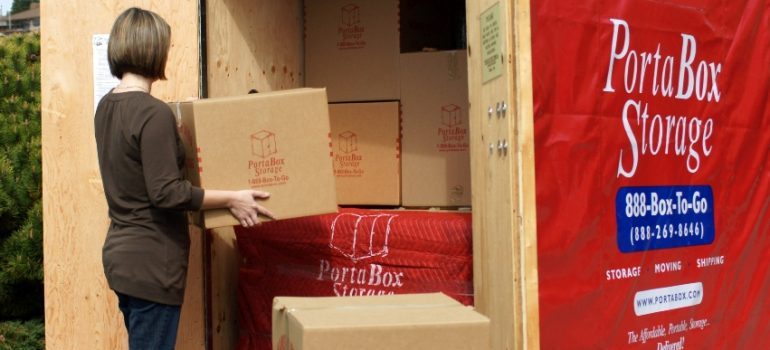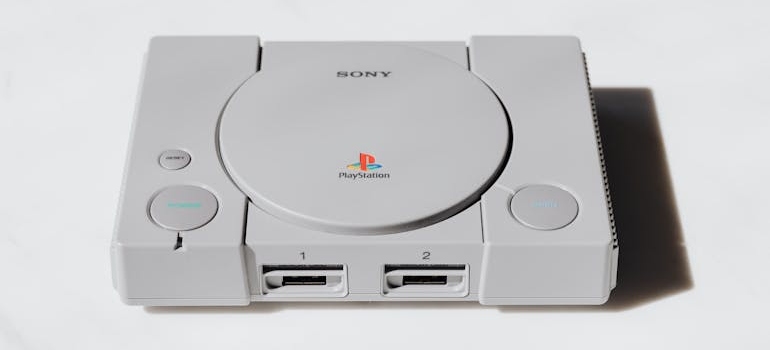Tips for safely storing old electronics
get a quote
Are your old electronics piling up and gathering dust? Proper storage is essential to ensure these valuable gadgets remain in good condition and secure. From vintage gaming consoles to retired laptops, safeguarding your devices from damage and data breaches relies on following these expert tips. Your goal? To keep them in excellent shape and ready for future use or disposal. Therefore, let’s explore the best PortaBox Storage Seattle practices for storing old electronics safely and efficiently!
How to safeguard your old electronics
Storing old electronics properly is necessary to maintain their longevity and usability. Here are essential tips to ensure your devices are well-protected and preserved:
- Backup and Erase Data: Ensure important data is backed up, and devices are wiped clean to protect your privacy.
- Clean Thoroughly: Use soft cloths for exterior cleaning and compressed air for internal dust removal.
- Remove Batteries: Extract batteries to prevent leakage and store them separately in a cool, dry place.
- Ideal Storage Conditions: Maintain a stable, cool, and dry environment, avoiding direct sunlight.
- Protective Packaging: Use anti-static bags and bubble wrap to safeguard components.
- Label and Organize: Clearly label boxes within Bellevue self storage containers and keep cables neatly tied.
- Regular Checks: Periodically inspect stored electronics for any issues and ventilate the storage area.
- Climate Control: For long-term storage, consider climate-controlled units and moisture-absorbing desiccants.
- Safety First: Keep electronics away from flammable materials and use surge protectors for plugged-in devices.
These steps, grounded in best practices for electronics preservation, will help maintain the integrity and functionality of your devices over time. Proper handling and storage are crucial to prevent damage and ensure your electronics remain ready for future use, sale, or disposal.

1. Backup and Wipe Data
Backing up critical data ensures valuable information isn’t lost. Utilize external hard drives or cloud storage services to create duplicates of important files. This practice safeguards your data and facilitates easy access in the future, irrespective of the physical condition of the original device.
Once data is securely backed up, wiping the device clean is crucial. Erasing all personal data protects privacy and prevents unauthorized access to sensitive information. Factory reset options or specialized software designed for data wiping thoroughly removes all traces of your data, maintaining privacy.
2. Clean the devices
Thorough cleaning before storage prevents long-term damage and ensures optimal condition. For exterior cleaning, use a microfiber cloth to gently remove dust and dirt without scratching the surface. Harsh chemicals can damage the casing or screen.
For interior cleaning, especially in desktops and other devices that can be opened, use compressed air to blow out accumulated dust from internal components. This helps maintain functionality by preventing dust buildup, which can cause overheating and other issues.
3. Remove batteries
Removing batteries before storage prevents potential damage. Batteries left inside electronics can leak over time, leading to corrosion and irreparable harm to internal components. To avoid this, carefully extract the batteries and store them separately in a cool, dry place. Plastic bags or battery cases prevent contact with other metal objects, which could cause short circuits or other damage.
4. Choose the right storage environment
The environment significantly impacts preservation. Ensure that your short term storage Seattle area is cool and dry, as extreme temperatures and high humidity levels can damage electronic components. Heat causes components to expand and contract, leading to potential breakage, while moisture leads to rust and short circuits.

Additionally, keep devices away from direct sunlight to prevent overheating and fading. Maintaining a stable environment protects electronics from elements that degrade functionality and appearance over time.
5. Use protective packaging
Appropriate protective packaging safeguards electronics during storage. Place sensitive components, such as motherboards, RAM, and GPUs, in anti-static bags to prevent electrostatic discharge, which damages delicate circuits.
Wrap devices in bubble wrap to cushion them against physical impacts and protect them from dust and moisture. If possible, store electronics in their original boxes, designed to offer the best protection. These packaging strategies ensure devices remain in excellent condition, free from physical and environmental damage.
6. Organize and label
Proper organization and labeling of stored electronics simplify retrieval and prevent accidental damage. Clearly label boxes and bags with their contents and any important information, such as the date of storage or specific handling instructions.
This practice helps locate and identify each item when needed. Organize cables using cable ties or zip-lock bags to keep them from tangling and maintain order in the storage space. Maintaining a well-organized storage area enables quick and efficient access to electronics while minimizing the risk of damage.
7. Check periodically
Regular inspections of stored electronics in Seattle mobile storage containers ensure they remain in good condition. Periodically check for signs of damage, such as corrosion, battery leakage, or dust buildup. Address any issues promptly to prevent further deterioration. Also, occasionally air out the storage area to prevent mold and mildew buildup, which damages both devices and their packaging.

8. Consider long-term storage solutions
For extended storage periods, utilize climate-controlled storage units to maintain a consistent temperature and humidity level. These units provide an optimal environment that protects electronics from extreme conditions. Further, use desiccants, such as silica gel packs, within storage boxes to control moisture levels and prevent condensation.
Investing in long-term storage solutions ensures electronics remain in pristine condition, free from the detrimental effects of fluctuating environmental factors. So don’t hesitate to shop around for reliable residential or business storage Seattle offers (depending on your needs).
9. Safety precautions
Adhering to safety precautions is vital when storing electronics. Keep devices away from flammable materials and liquids to prevent fire hazards. When storing electronics that remain plugged in, use surge protectors to guard against power surges, which cause significant damage.
Proper safety measures protect devices and ensure the overall safety of the storage environment. Implementing these precautions creates a secure and hazard-free space for electronics, maintaining their integrity and functionality.
Preserving value and functionality through proper storage
Investing time and effort in adequate storage protects your technology from potential damage and extends its usability. Implement these expert tips to maintain the integrity of your electronics, safeguarding them for future use or eventual disposal in Seattle. Effectively storing old electronics is a key component in the longevity and reliability of your valuable devices.
